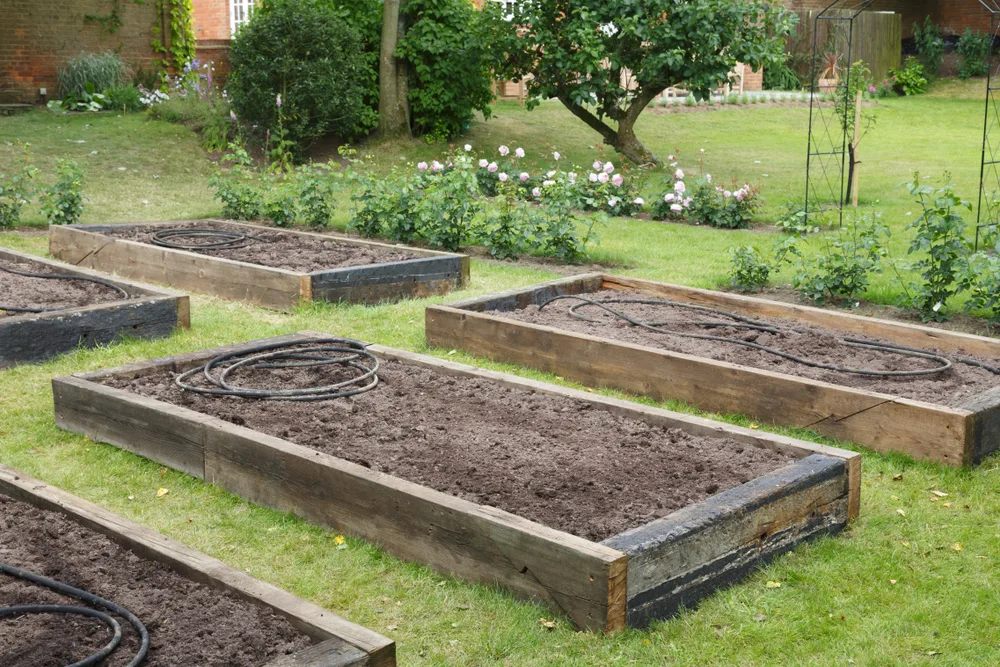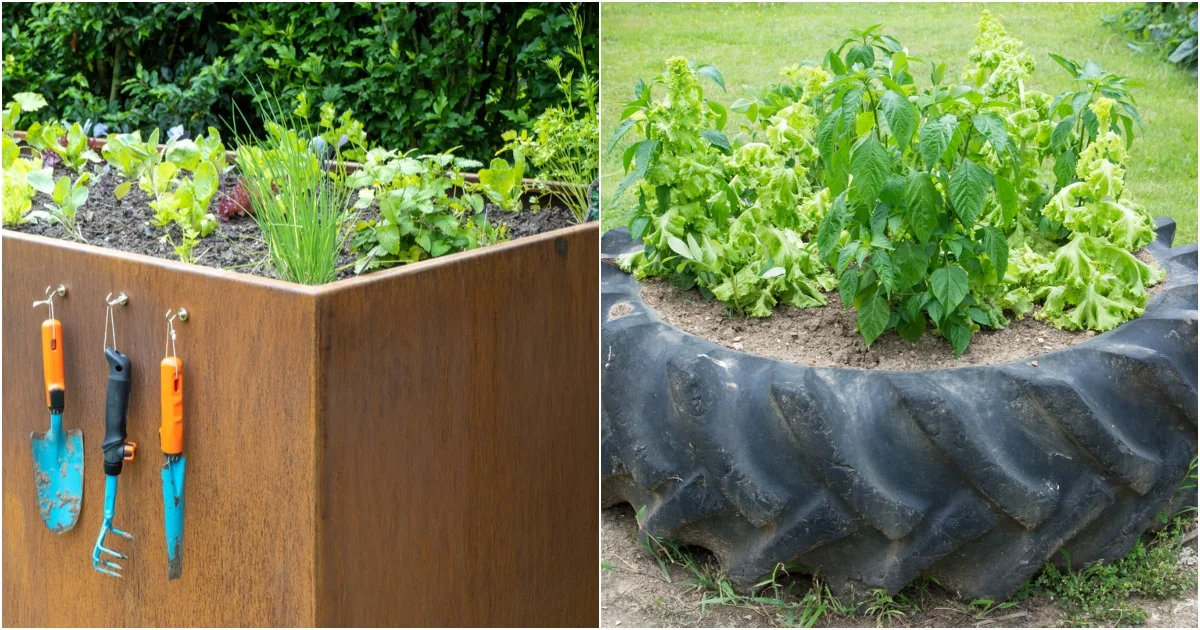
When it comes to building a raised garden bed, the possibilities are many.
Raised beds can take on countless shapes, sizes, layouts, and materials. From wood, metal, stone, and plastic to wine bottles, dressers, animal troughs, canoes, and cardboard boxes, there’s no shortage of creative ways people have dreamed up to garden above ground.
As it so often goes, the more expensive the material you use to build your raised beds, the more durable and long-lasting it tends to be. Still, you can find high quality materials for a fraction of the cost by upcycling, reclaiming, and scavenging up your building supplies.
Whether you rustle up your materials or simply purchase them from a store, not all raised bed materials are equally up to the task.
8 Best Raised Bed Materials
A good raised bed material should be durable, easy to work with, and safe to use around people, plants, and soil. It doesn’t hurt if it’s easy on the eyes, too.
Other things to consider before landing on a raised bed material include the expense, its availability in your region, how the material will perform in your specific climate, and if you’d prefer a permanent structure or something that can be moved around.
Wood
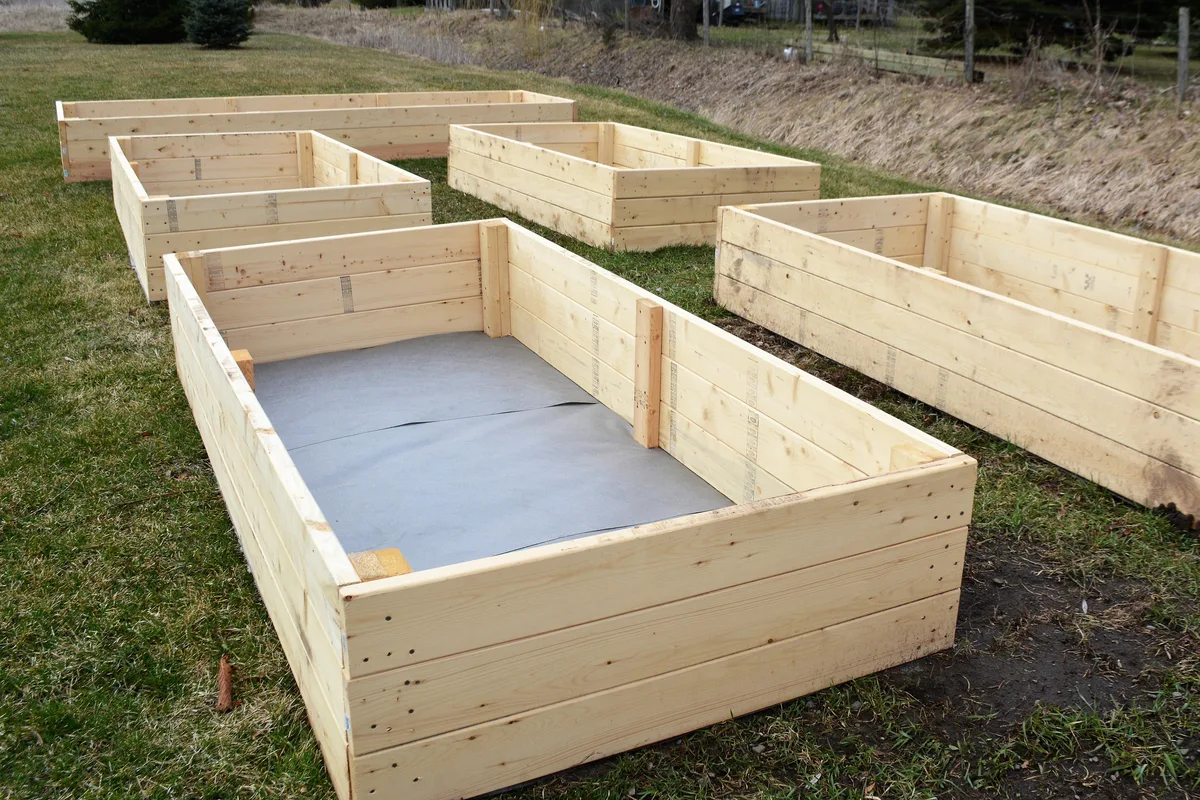
The traditional raised bed building material is wood, and for good reason. Wood results in an attractive raised bed that will blend in perfectly with the natural garden setting.
It’s perhaps the most versatile too – wood can be easily cut to size and requires only the most rudimentary of building skills to throw it together.
There are endless design options when working with wood. Wooden raised beds can be made to any size, height, and shape to fit into your garden landscape. Build the classic 6’ x 4’ rectangular grow box. Or construct elevated beds and keyhole beds for better accessibility. Cascading tiered frames and corner beds create beautiful focal points that keep things visually interesting.
Untreated Lumber
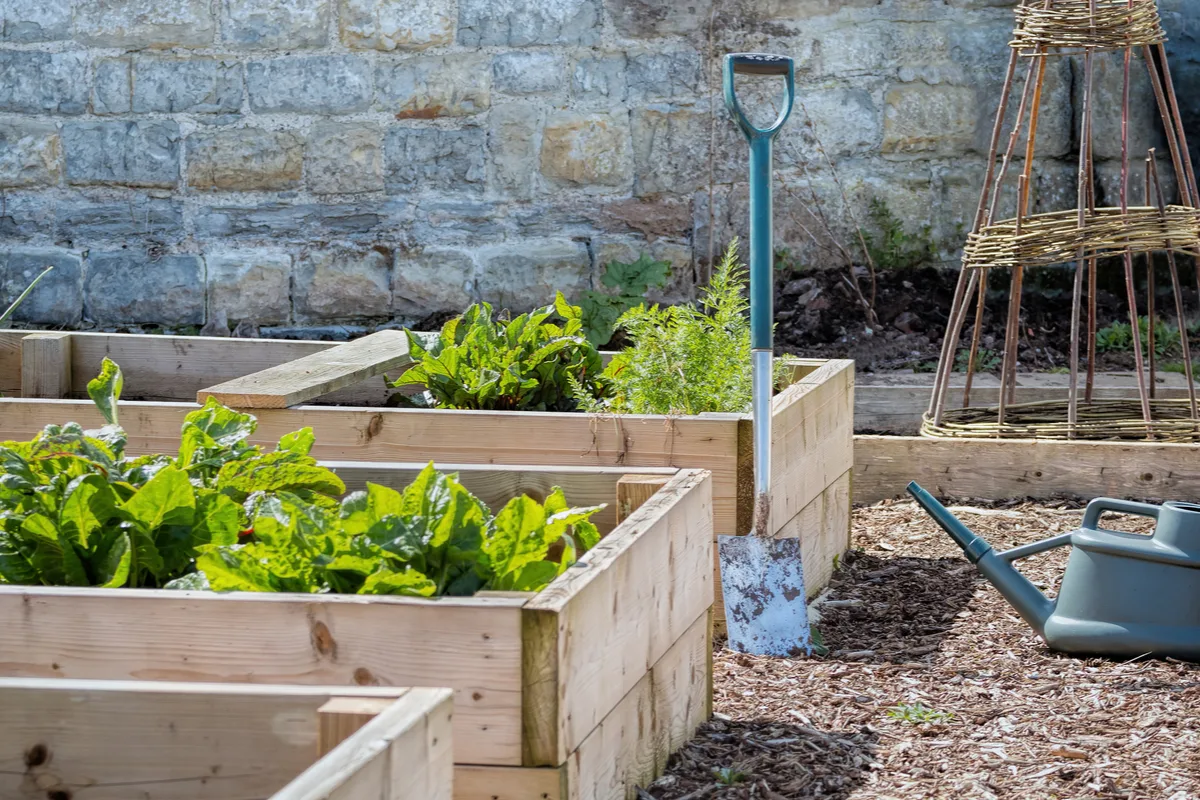
Milled wood planks are sturdy and strong and will usually last several years before they start to deteriorate. But they will rot away, eventually.
Use naturally rot-resistant wood like cedar and cypress and seal them prior to construction for the longest lasting wooden raised beds.
Raw Wood
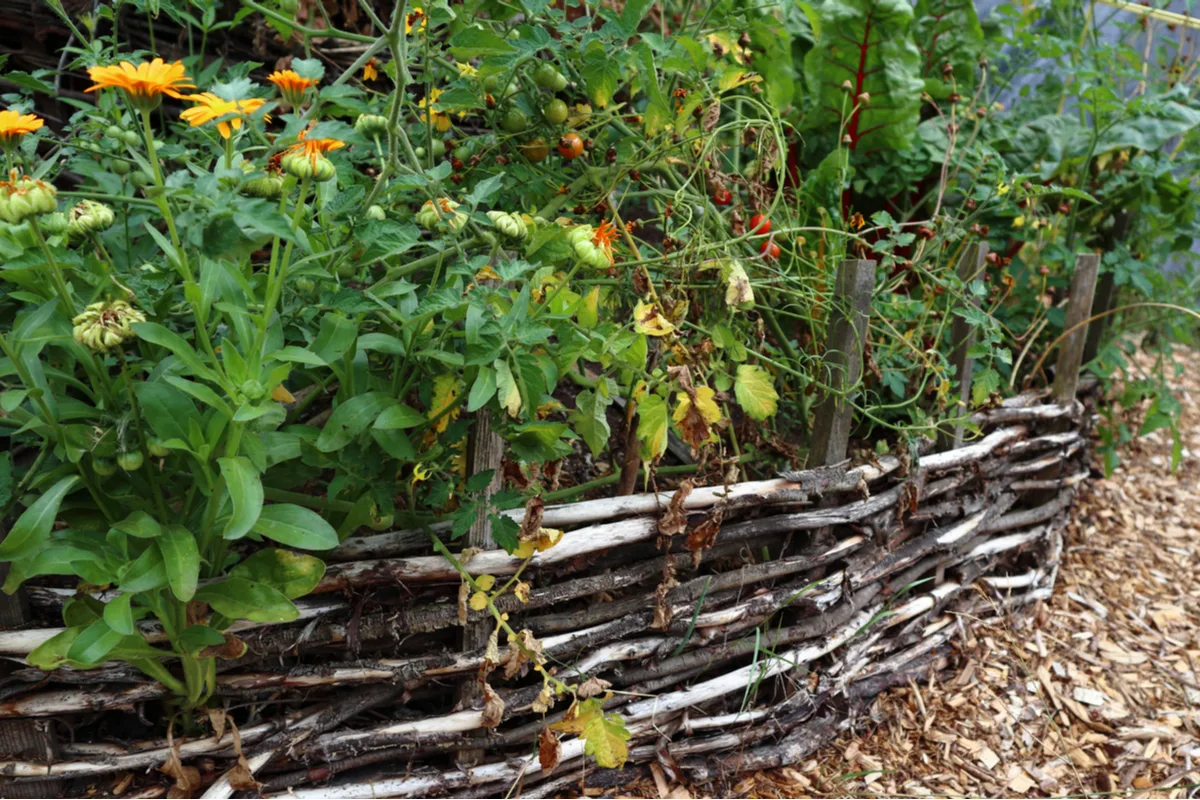
Wood logs, branches, and sticks offer a wonderfully rustic alternative to wooden boards, and you can often find them for next to nothing in cost.
Raw timber scavenged locally is also probably one of the most environmentally-friendly ways to source wood building supplies.
Wooden logs and branches can be piled up to create the frame or arranged vertically around the perimeter. Another option is to weave long and flexible branches into wattle fence to contain your raised garden soil.
Masonry
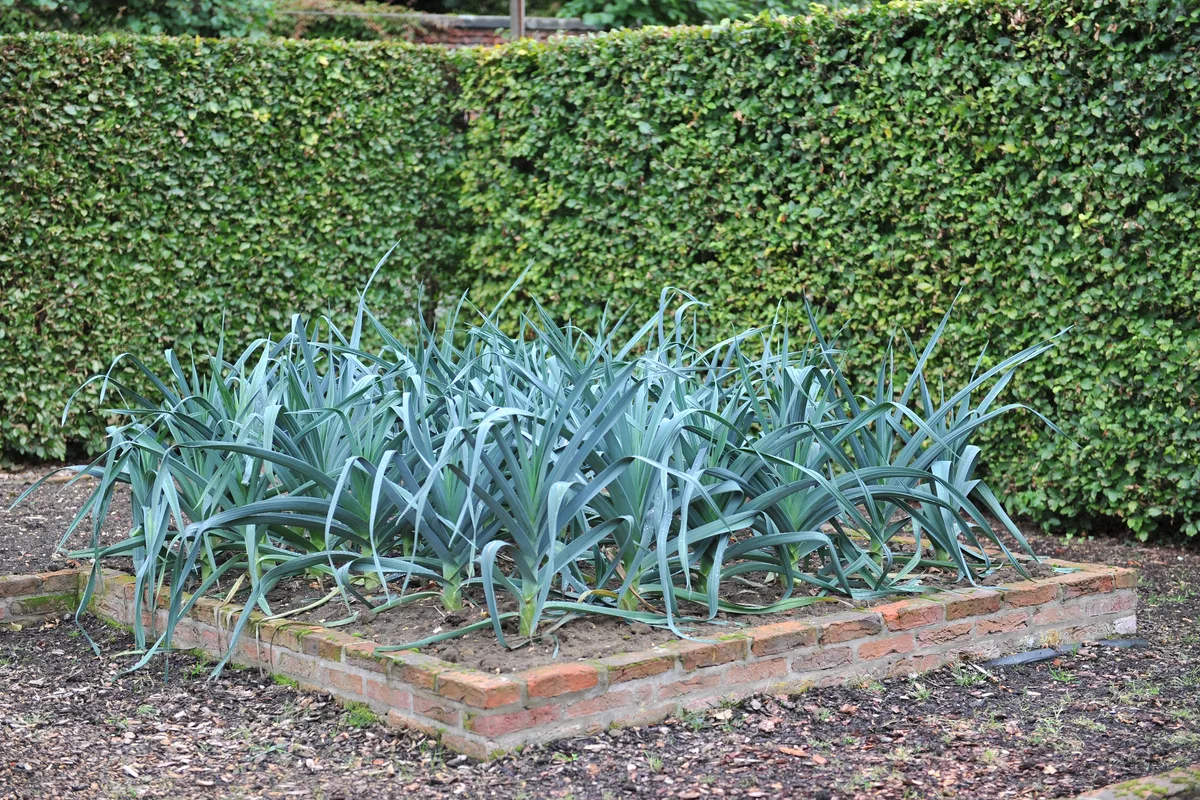
Masonry, like natural stone and brick, are excellent raised bed materials that will last pretty much forever.
Great for both informal and formal garden settings, masonry will create solid and durable frame that is practically maintenance-free. These materials can take on numerous shapes and forms and are particularly fantastic for curved and contoured walls that hug meandering pathways.
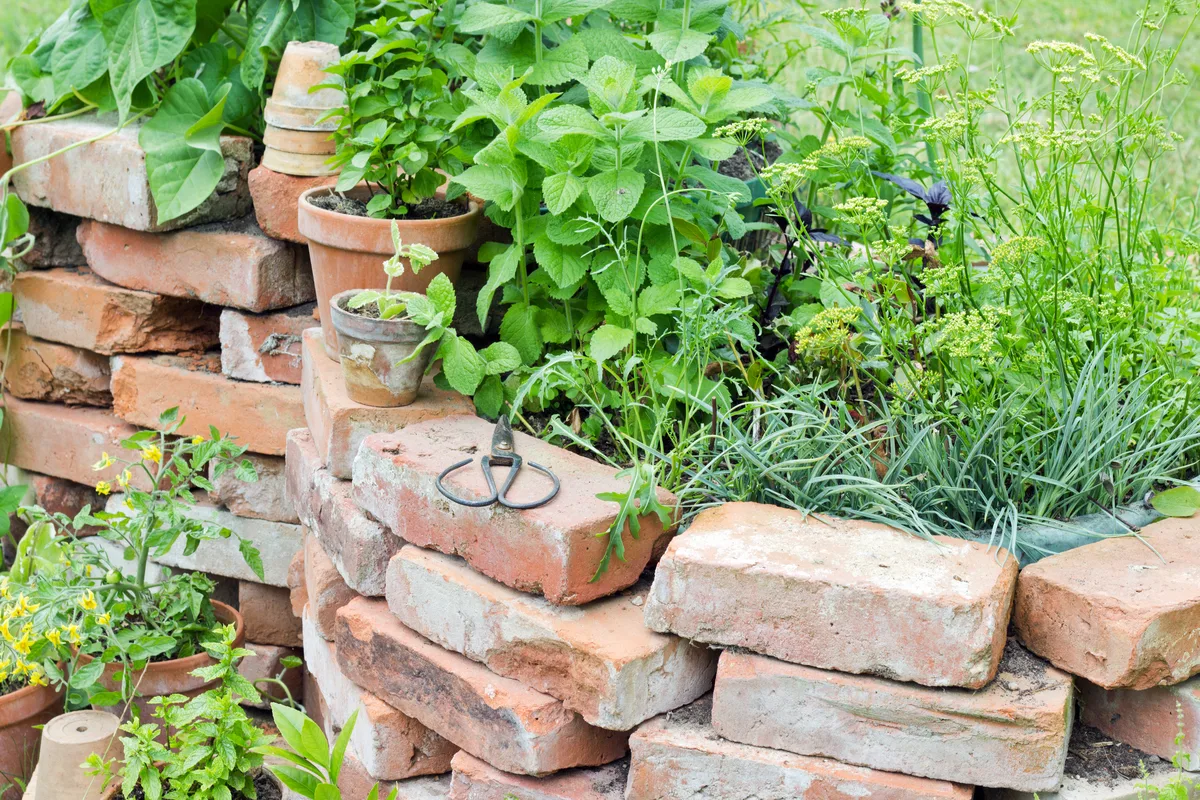
In temperate climates, masonry raised beds can help extend the growing season. Acting as a heat sink, stonework will absorb heat from the sun during the day and release the built-up warmth into the soil at night.
That said, masonry can be quite expensive when you need large quantities. It’s heavy and can be difficult to work with.
If you want to build deep raised beds, you may need to use mortar or cement to hold it all together, which makes the frame a permanent part of the hardscape.
Natural Stone
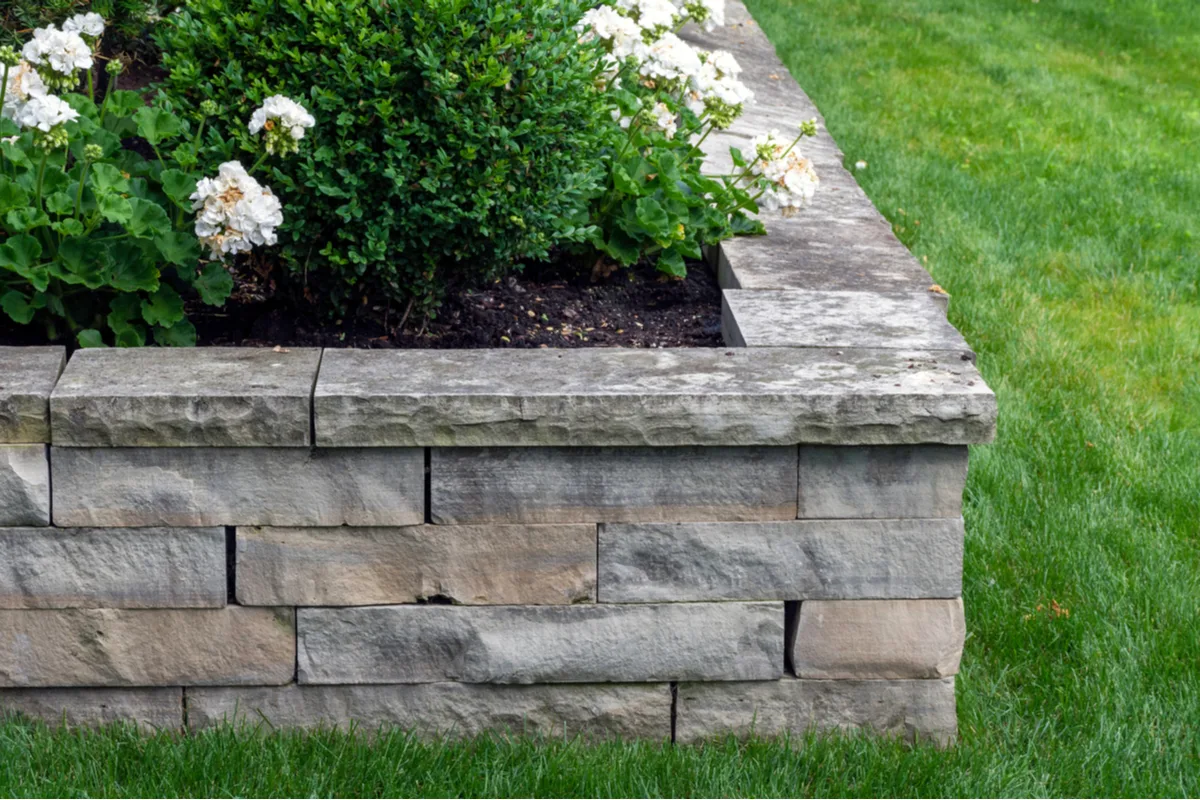
Granite, sandstone, limestone, fieldstone, flagstone, slate, basalt, and cobblestone are just some of the options for natural stone.
These stones formed millions of years ago and their composition and appearance depends on what minerals happened to be nearby at the time. For example, granite is a blend of quartz, feldspar, and plagioclase, while limestone is mainly made up of calcite and aragonite.
The combination of minerals can result in a spectacular array of colors and patterns. Some natural stones may be multicolored, mottled, or sparkly. Others have smooth, muted, and earthy tones.
Stone is available in its natural irregular shape or pre-cut into blocks for easier stacking.
Brick
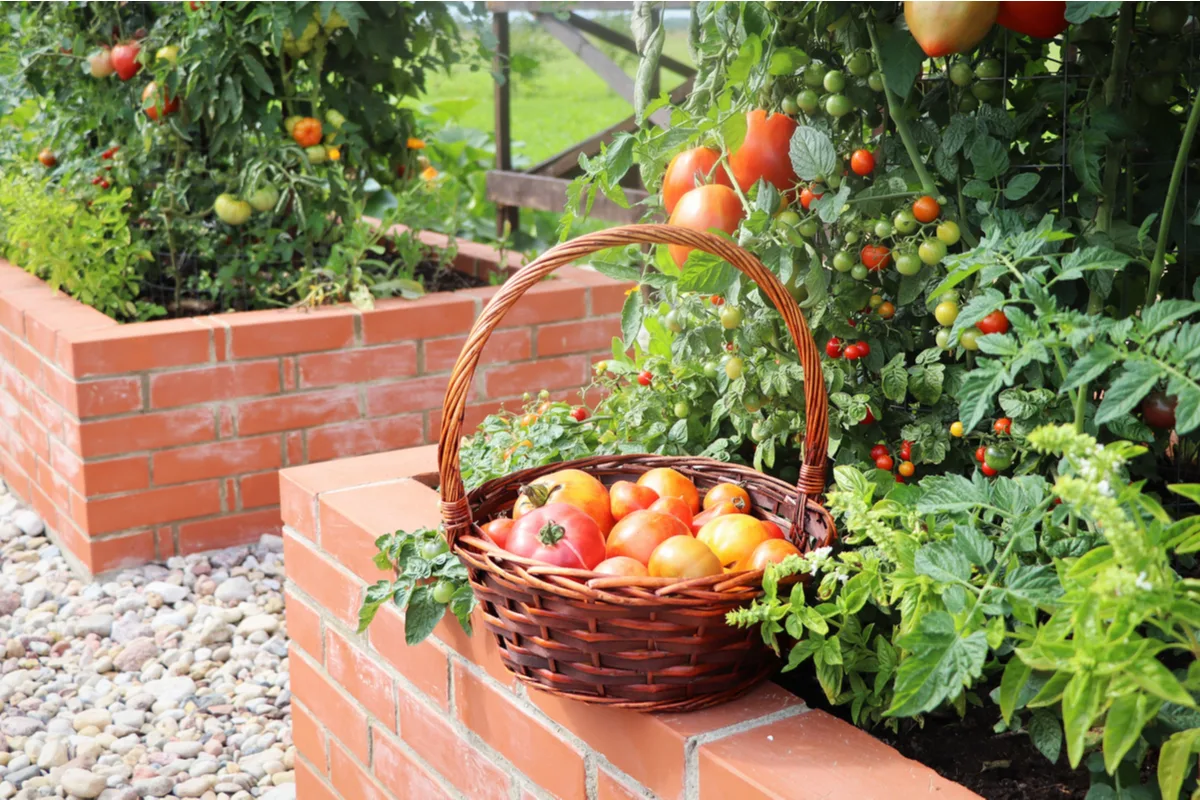
Bricks are typically made from clay and come in all sorts of colors – from numerous shades of red to grey, blue, yellow, and cream-colored.
Because of their uniform size, it’s easy to calculate exactly how many bricks you will need for your raised bed build.
Raised beds made from brickwork can be stacked horizontally in an interlocking fashion or slanted for a sawtooth style edge.
Using reclaimed bricks in the garden is much better for the environment (as well as your pocketbook). Your local Habitat for Humanity can be a wonderful source of salvaged building materials like bricks.
Metal
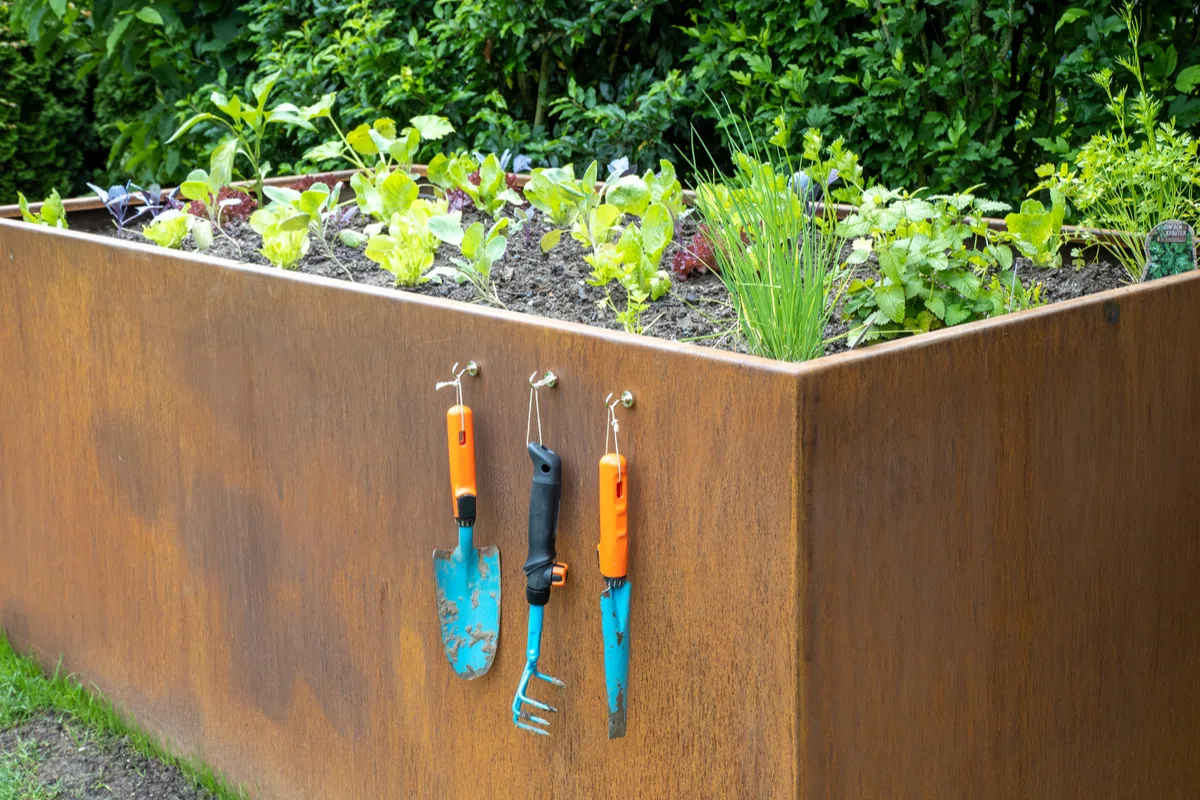
Metal raised beds are becoming increasingly popular among gardeners who love their sleek and modern look. And they’re super durable, lasting 30 years or more.
Like stone, metal is a heat sink that will lengthen your growing season so you can garden earlier in spring and later in fall.
In wet climates, metal raised beds are a great choice since they won’t rot away like wood. To prevent your raised beds from rusting, always use galvanized metals.
Even if you don’t care for the steely appearance of metal raised beds, they can be painted in fun or neutral colors to help soften the look.
Stock Tanks
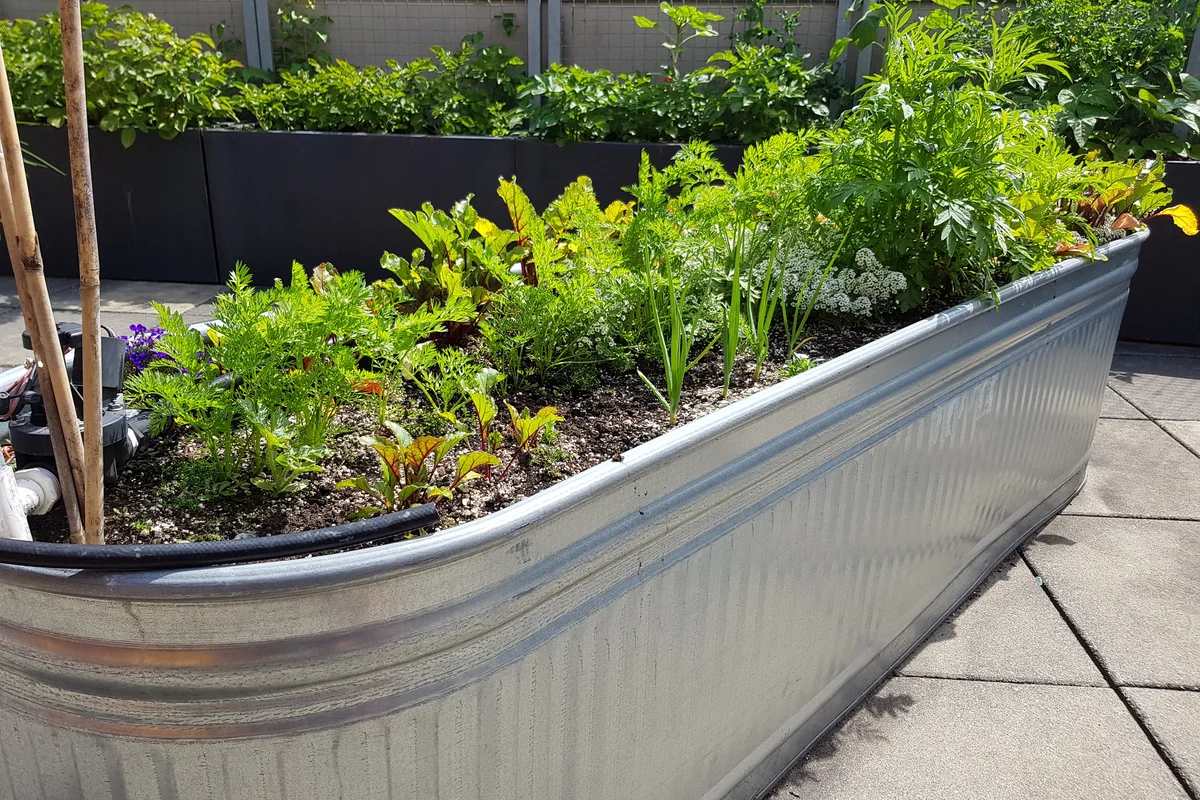
The simplest option for metallic raised beds is stock tanks. Easy to install with no assembly required, stock tanks are large troughs used to feed farm animals.
These come with either rounded or rectangular edges and can be set down on your chosen gardening spot. Simply add a few drainage holes along the bottom and you’re all set.
Stock tanks can be permanent feature in the garden, but are not too difficult to move around either. This gives a bit more flexibility when your design ideas change along with the seasons.
Corrugated Metal
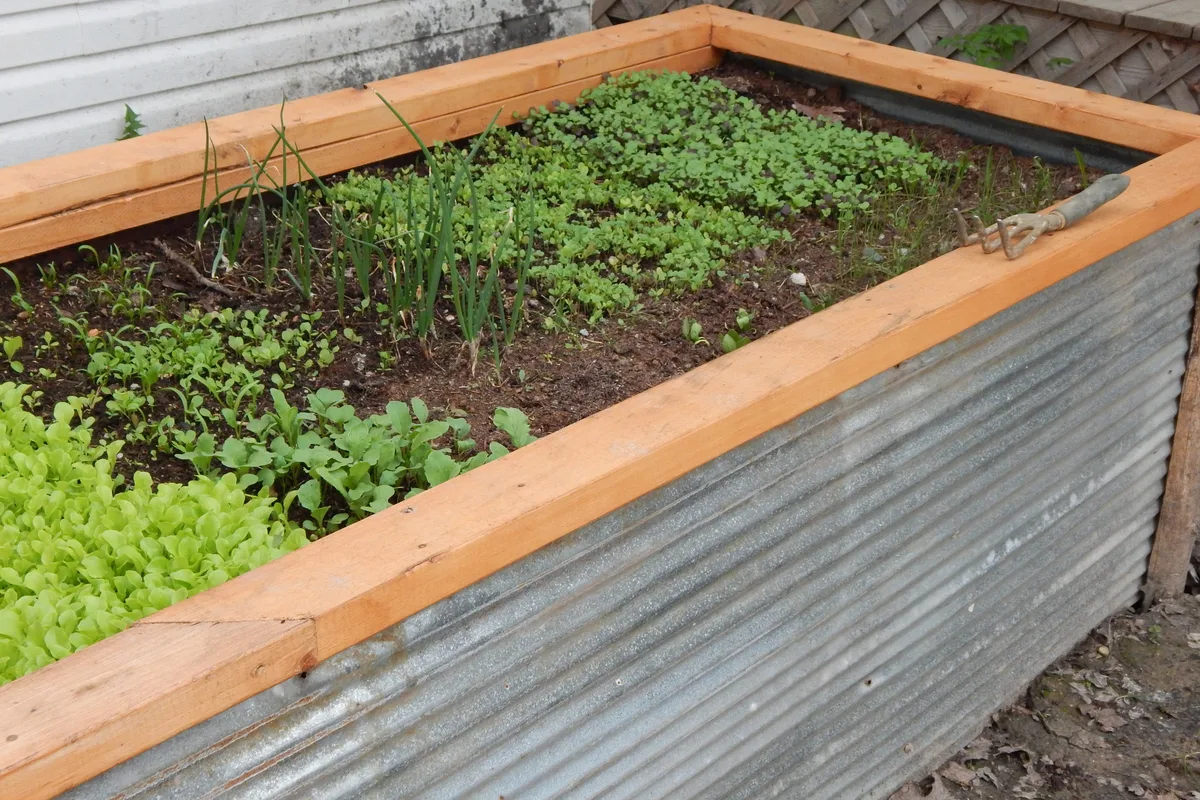
With a few corrugated metal sheets, metal flashing, deck screws and wood (optional), you can build your own galvanized steel raised bed.
DIYing it will give full control over the finished size, height, and shape of the bed.
There are plenty of tutorials out there – here’s one that sets the metal panels inside a wooden frame.
No Frame
That’s right, you don’t necessarily need a frame to enjoy all the benefits of gardening above the soil line.
Hügelkultur
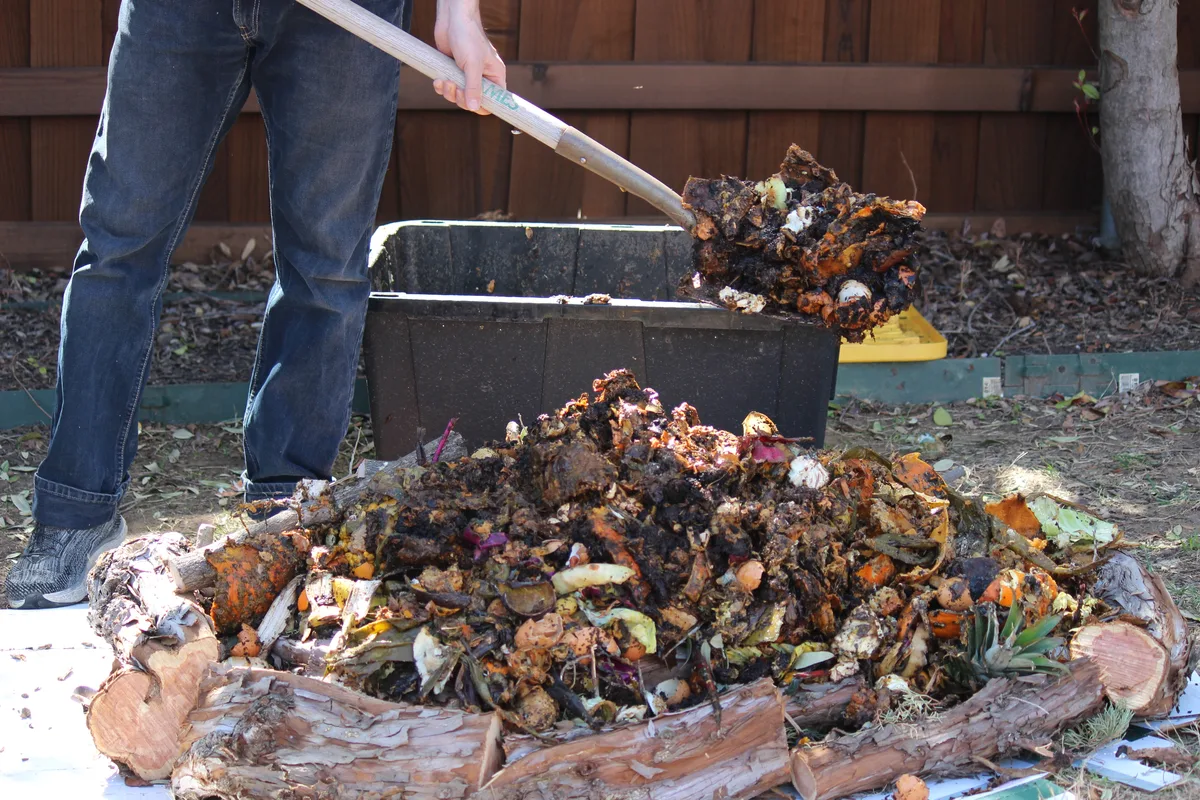
German for “hill culture”, hügelkultur involves creating mounds from decaying wood, organic matter, and compost.
Once you’re finished layering your materials, the hill will be around 3 feet tall.
Here’s everything you need to know about building a hügelkultur raised bed.
Mandala Garden
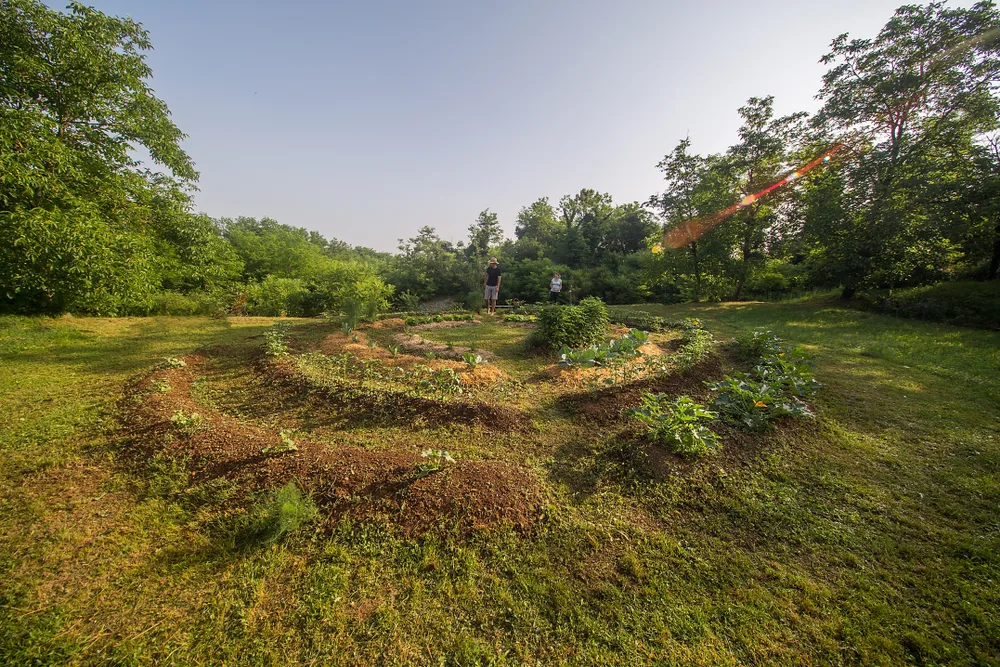
Instead of rows upon rows, mandala gardening creates amazing shapes and patterns in the vegetable patch.
You can make a myriad of designs – keyhole, concentric circles, spirals, and more – by mounding up the soil between pathways.
The result is captivating and utterly unique raised beds that will add lots of visual interest to the surrounding landscape.
5 Raised Bed Materials You Should Never Use
No matter whether you intend to grow food or flowers in your raised garden beds, it’s wise to avoid using materials that will leach toxins into the soil.
Heavy metals and other chemicals will accumulate in soil near the raised bed, but they can also travel much further than the confines of your garden. Toxic contaminants are most mobile in clay, sandy, or wet soils where they can eventually make their way into the water table.
The first rule of gardening really should be: do no harm. Here are the worst raised bed materials that can have a terrible impact on the environment:
Pressure-Treated Wood
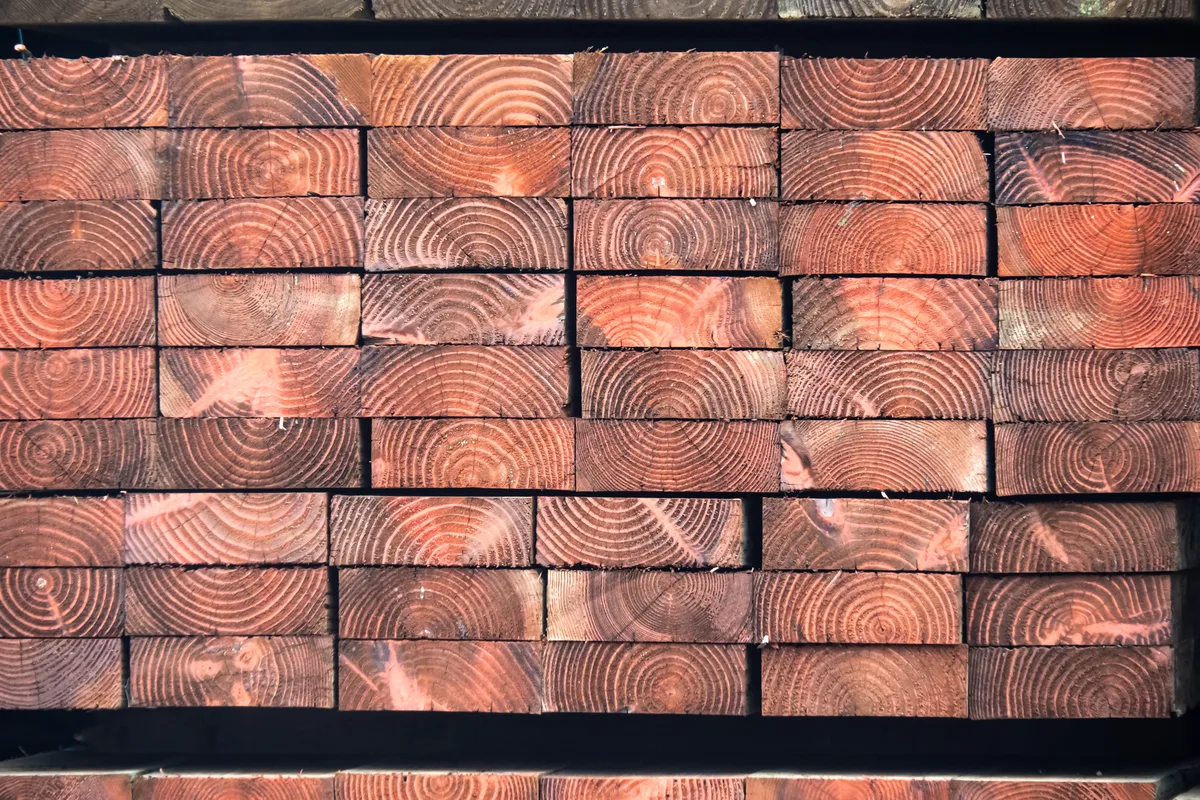
Prior to 2004, chromated copper asenate (CCA) was the most widely used wood preservative. It was discontinued over concerns of arsenic exposure, and nowadays alkaline copper quaternary (ACQ) is the standard lumber treatment.
Though it’s far less toxic than its forebear, ACQ contains high amounts of copper which can leach into the surrounding soil.
Copper is extremely toxic to fish and aquatic life, and using ACQ pressure-treated lumber to house moist soil increases the likelihood that copper will ooze into the watershed.
MB Pallets
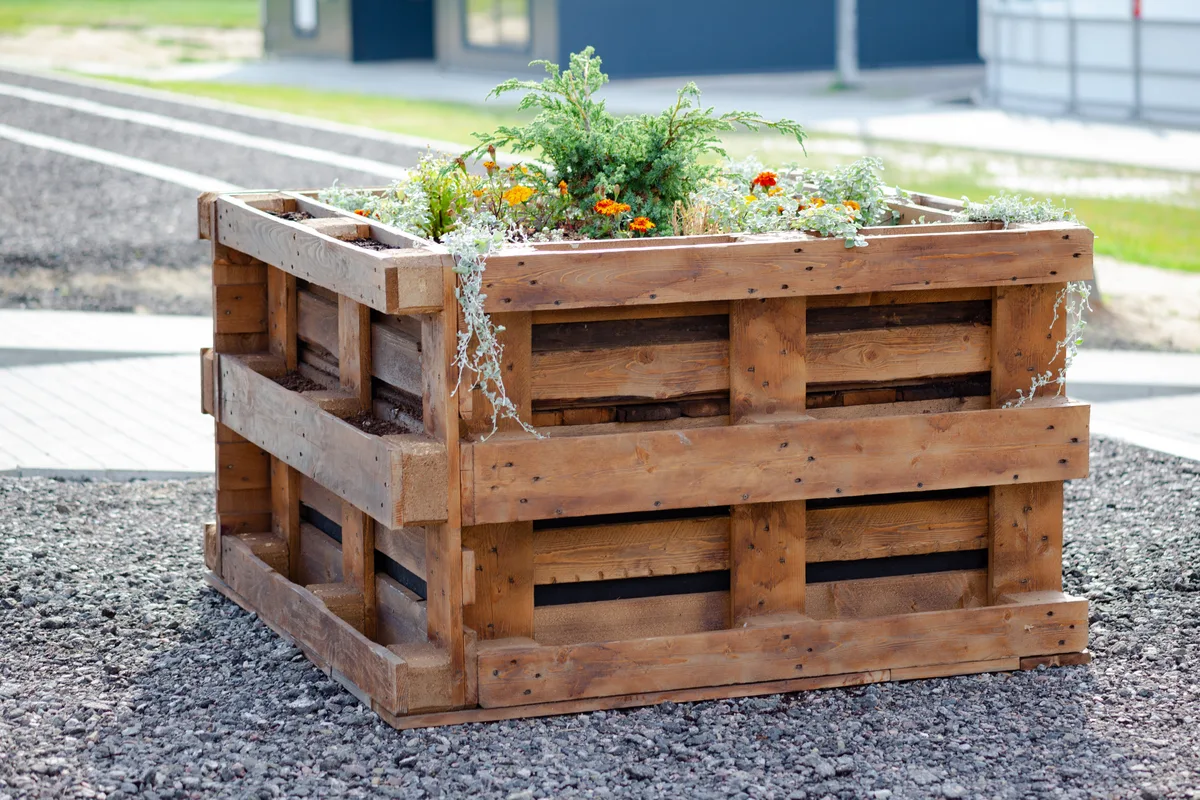
Wood pallets can be a cheap and less wasteful way to build your beds – but beware of those stamped “MB”.
Methyl bromide is a broad spectrum pesticide that’s incredibly harmful to human health. Using wood treated with it in any capacity is ill-advised.
It will readily kill fungi, insects, roundworms, and even rodents. MB pallets off-gas into the atmosphere and directly damage the ozone layer.
In any DIY pallet project, indoors and out, only use pallets stamped with “HT” – or heat treated. This means that the pallets were sterilized for at least 30 minutes at 132°F and above. HT pallets are completely safe for upcycling into raised beds and beyond.
Railroad Ties
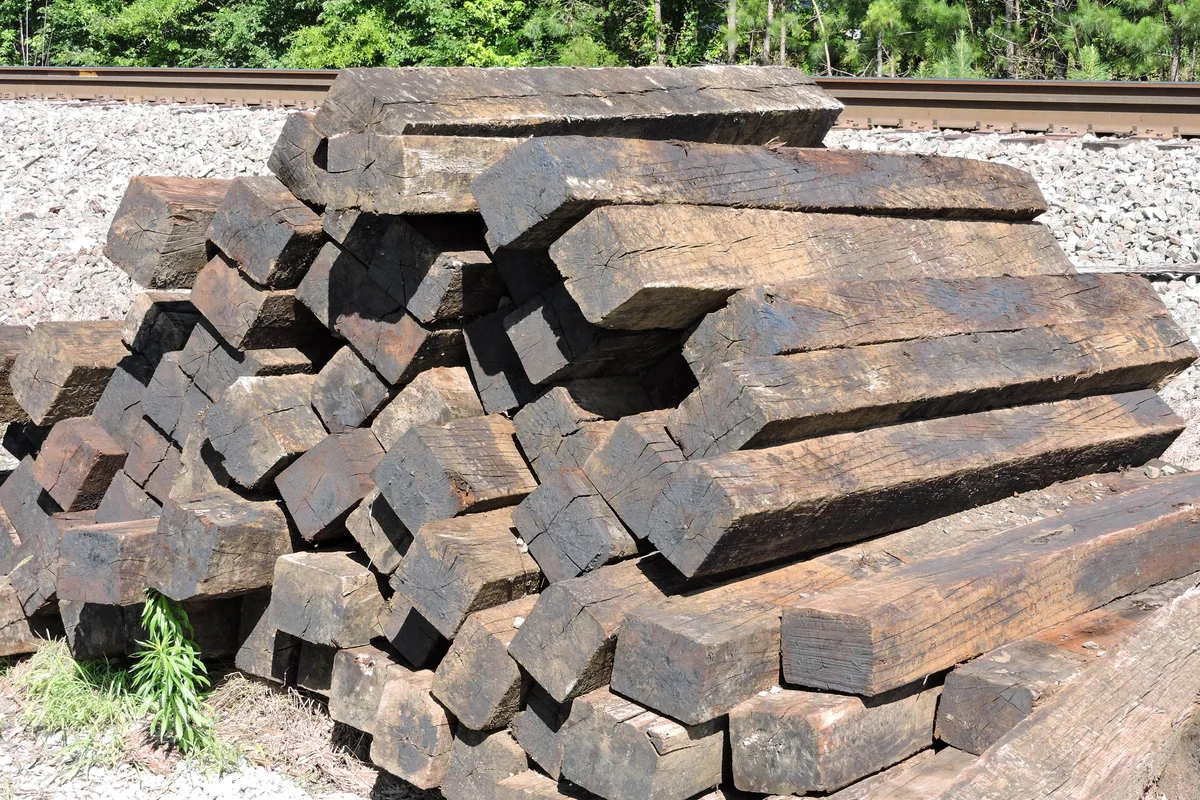
Wood railroad ties are treated with creosote, another harsh pesticide that should never be used around humans and plants.
Creosote is a sooty substance that repels termites, fungi, and other pests. It’s made from tar created from coal, oil, and other fossil fuels.
Prolonged and frequent contact with creosote railroad ties is not only dangerous to human health, it will leach out into the soil to the detriment of plants, insects, and small animals.
Cinder Blocks
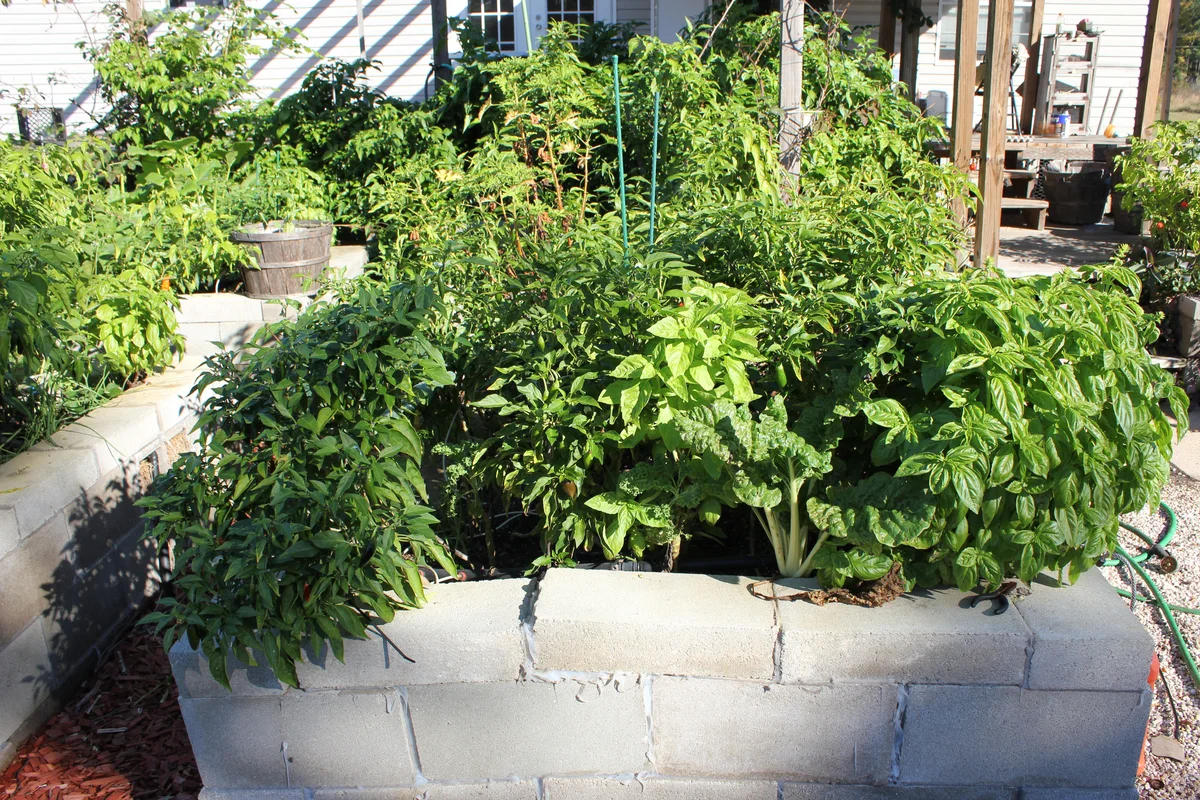
Cinder blocks made from fly ash – or coal particulates – contain arsenic, lead, mercury, and other heavy metals. Although cinder blocks haven’t been mass produced for around 50 years, you might want to avoid them entirely if you’re using salvaged materials for your raised beds.
Modern-day concrete blocks look identical to the old cinder blocks but are made from Portland cement and other aggregates. Concrete is considered non-toxic and safe to use in the garden. However, the concrete industry has a massive carbon footprint and is one of the globe’s main producers of CO2.
Old Tires
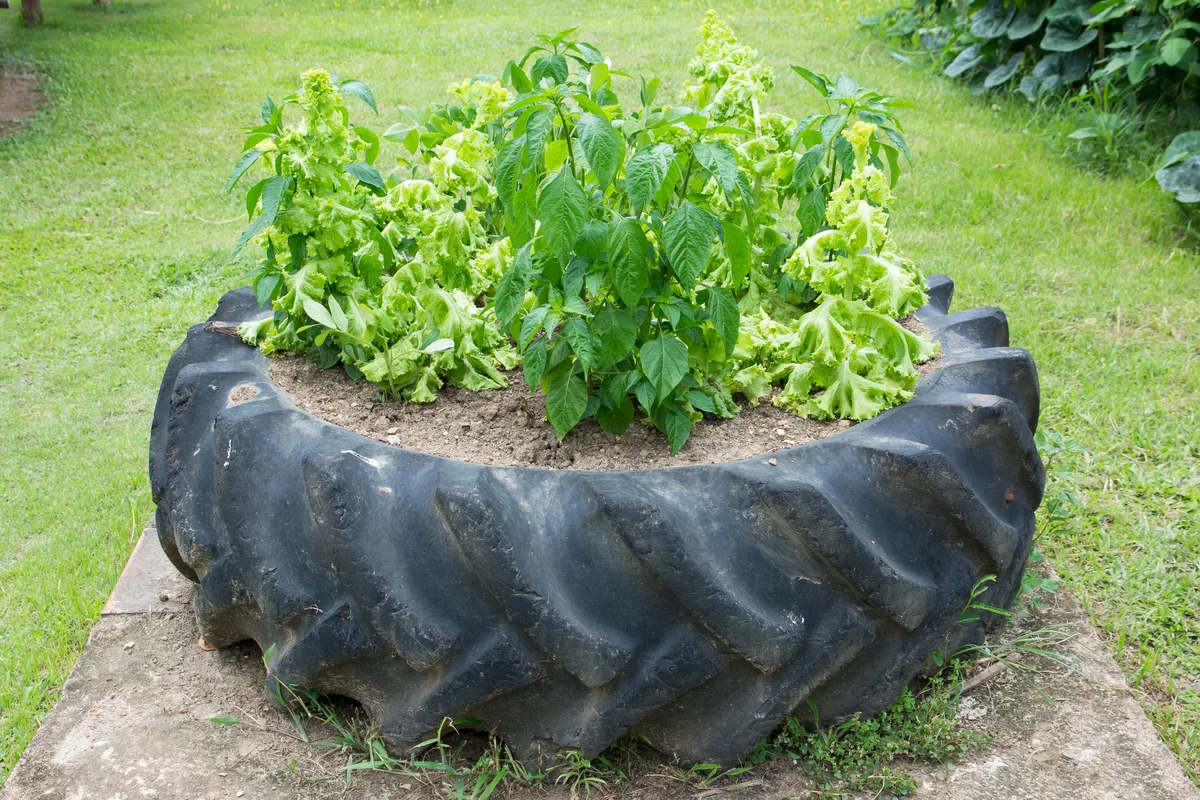
The effort to upcycle trash into useful things is truly admirable, but some items – like old tires – are often best avoided in the garden.
Tires contain cadmium, lead, and other nasty stuff that could theoretically leach into the soil. Some argue that old tires have already released most toxins during the first year of use on the roads, and that it takes decades for them to degrade.
But the jury’s still out on this one. To date, no scientific studies have been conducted to determine whether old tires will contaminate garden soil. Still, why take the risk? Especially when using raised beds to grow food, it’s better to be safe than sorry.
Once you’ve got your raised beds built and at the ready, next you’ll want to fill them up with rich and healthy soil.
Finally, it’s time to make with the planting – here’s the best fruits and vegetables to grow in raised beds – and the worst!
Read Next:

Get the famous Rural Sprout newsletter delivered to your inbox.
Including Sunday musings from our editor, Tracey, as well as “What’s Up Wednesday” our roundup of what’s in season and new article updates and alerts.


